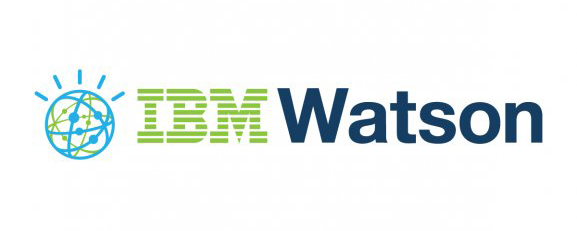
IBM Watson has been a pioneering force in artificial intelligence (AI), renowned for its ability to process natural language, analyze vast amounts of data, and provide insightful answers and recommendations. The journey of Watson’s development is encapsulated in a series of groundbreaking research papers. Here, we explore five seminal papers that have significantly contributed to Watson’s evolution and its impact on AI technology.
1. Introduction to “This is Watson”
Authors: D. A. Ferrucci
Publication: IBM Journal of Research and Development, May-June 2012
DOI: 10.1147/JRD.2012.2184356
The paper “Introduction to ‘This is Watson’” by David A. Ferrucci serves as a cornerstone in understanding IBM Watson’s conceptual and technical foundation. This paper provides an overview of the Watson system, architecture, and capabilities, particularly highlighting its performance in the Jeopardy! challenge.
Ferrucci and his team detail Watson’s components, including its ability to process and understand natural language, generate hypotheses, and evaluate evidence to provide accurate answers. The paper emphasizes the significance of profound question analysis and the integration of advanced machine-learning techniques. Watson’s success in Jeopardy! demonstrated the potential of AI systems to handle complex language tasks and paved the way for its application in various domains, such as healthcare, finance, and customer service.
2. Question Analysis: How Watson Reads a Clue
Authors: A. Lally et al.
Publication: IBM Journal of Research and Development, May-June 2012
DOI: 10.1147/JRD.2012.2184637
The paper “Question Analysis: How Watson Reads a Clue” by A. Lally and colleagues delves into the intricacies of how Watson interprets and understands natural language questions. This paper is crucial for appreciating the sophistication behind Watson’s question-answering capabilities.
Lally et al. explain the various stages of question analysis, including parsing, linguistic analysis, and semantic interpretation. The authors discuss how Watson decomposes questions into fundamental components, identifies critical concepts, and determines the context to generate relevant answers. The paper highlights the use of advanced natural language processing (NLP) techniques and machine learning models that enable Watson to achieve high accuracy in understanding and answering diverse questions. This deep understanding of question analysis forms the backbone of Watson’s effectiveness in real-world applications.
3. Deep Parsing in Watson
Authors: M. C. McCord, J. W. Murdock, B. K. Boguraev
Publication: IBM Journal of Research and Development, May-June 2012
DOI: 10.1147/JRD.2012.2185409
“Deep Parsing in Watson,” authored by M. C. McCord, J. W. Murdock, and B. K. Boguraev, focuses on the parsing techniques used by Watson to understand complex sentence structures. Parsing is a critical component of NLP that involves analyzing the grammatical structure of sentences to extract meaning.
The authors describe using a hybrid approach that combines rule-based and statistical methods to achieve deep parsing. This approach allows Watson to handle various linguistic constructs and ambiguities. The paper details the algorithms and models employed to perform syntactic and semantic parsing, enabling Watson to interpret the relationships between different parts of a sentence accurately. This capability is essential for understanding nuanced language and generating precise responses, especially in domains like legal and medical texts where accuracy is paramount.
4. Textual Resource Acquisition and Engineering
Authors: J. Chu-Carroll, J. Fan, N. Schlaefer, W. Zadrozny
Publication: IBM Journal of Research and Development, May-June 2012
DOI: 10.1147/JRD.2012.2185901
The paper “Textual Resource Acquisition and Engineering” by J. Chu-Carroll, J. Fan, N. Schlaefer, and W. Zadrozny explores the methods used to acquire and process large volumes of text data for Watson’s knowledge base. Accessing and utilizing vast amounts of textual information is a cornerstone of Watson’s success.
Chu-Carroll et al. discuss the strategies for gathering relevant data from diverse sources, including structured databases, unstructured documents, and web content. The paper outlines the processes of data cleaning, normalization, and indexing to ensure the quality and accessibility of information. The authors emphasize the importance of engineering scalable systems for data acquisition and using sophisticated NLP techniques to extract meaningful knowledge from text. This extensive knowledge base enables Watson to provide informed answers across various topics and domains.
5. Automatic Knowledge Extraction from Documents
Authors: J. Fan, A. Kalyanpur, D. C. Gondek, D. A. Ferrucci
Publication: IBM Journal of Research and Development, May-June 2012
DOI: 10.1147/JRD.2012.2186519
In “Automatic Knowledge Extraction from Documents,” J. Fan, A. Kalyanpur, D. C. Gondek, and D. A. Ferrucci present techniques for extracting structured knowledge from unstructured text. This capability is vital for transforming raw text data into actionable insights.
The authors describe using machine learning models and NLP algorithms to identify and extract entities, relationships, and facts from documents. The paper highlights the challenges of dealing with noisy and ambiguous data and the methods to enhance accuracy and reliability. The extracted knowledge is then integrated into Watson’s knowledge base, enabling the system to understand and reason about complex information. This process of automatic knowledge extraction is crucial for maintaining an up-to-date and comprehensive repository of information that Watson can leverage to answer questions and provide recommendations.
Conclusion
The five papers discussed above provide a comprehensive overview of the technological advancements and innovations that have propelled IBM Watson to the forefront of AI research and application. From understanding natural language to deep parsing, data acquisition, and knowledge extraction, these papers highlight the intricate processes and sophisticated techniques that underpin Watson’s capabilities.
IBM Watson’s journey, chronicled in these seminal papers, showcases AI’s potential to revolutionize how we process and interact with information. As Watson continues to evolve, building on the foundations of these pioneering works, it promises to deliver even greater value across diverse domains, transforming industries and enhancing our understanding of the world.